We finished the Drake Passage with our stomachs intact and got our first sights of the White Continent! The winds are down, and the stoke is high.
As a ship run by Lindblad Expeditions and National Geographic, there is a lot of focus on education as well as adventure. Today we heard lectures on tracking climate change through ancient ice cores by Dr John Higgins from Princeton, penguin breeding habits by Jamie Coleman, and the legal framework under which the ship operates.
Antarctica isn’t owned by anyone, but is preserved under a treaty for “peaceful purposes and scientific investigation” by all signatory countries. Tourism is regulated by the IAATO, which has its own rules regarding landing sites, the number of people allowed on shore at a time, and general “leave no trace” principles. As the largest wilderness left on Earth, it is our responsibility to help preserve it for future generations.
There is also a concern about tracking non-native wildlife from the mainland, and cross-contaminating sites. After a biosecurity briefing, we cleaned all the bags that we intend to bring on to land.
Staff closely inspected all velcro for seeds, vacuumed inside pockets, and dipped our boots and tripod feet in disinfectant. We’ll have to scrub our soles every time we come back on board for any bit of mud, so we don’t transfer any micro-organisms to places they shouldn’t be.
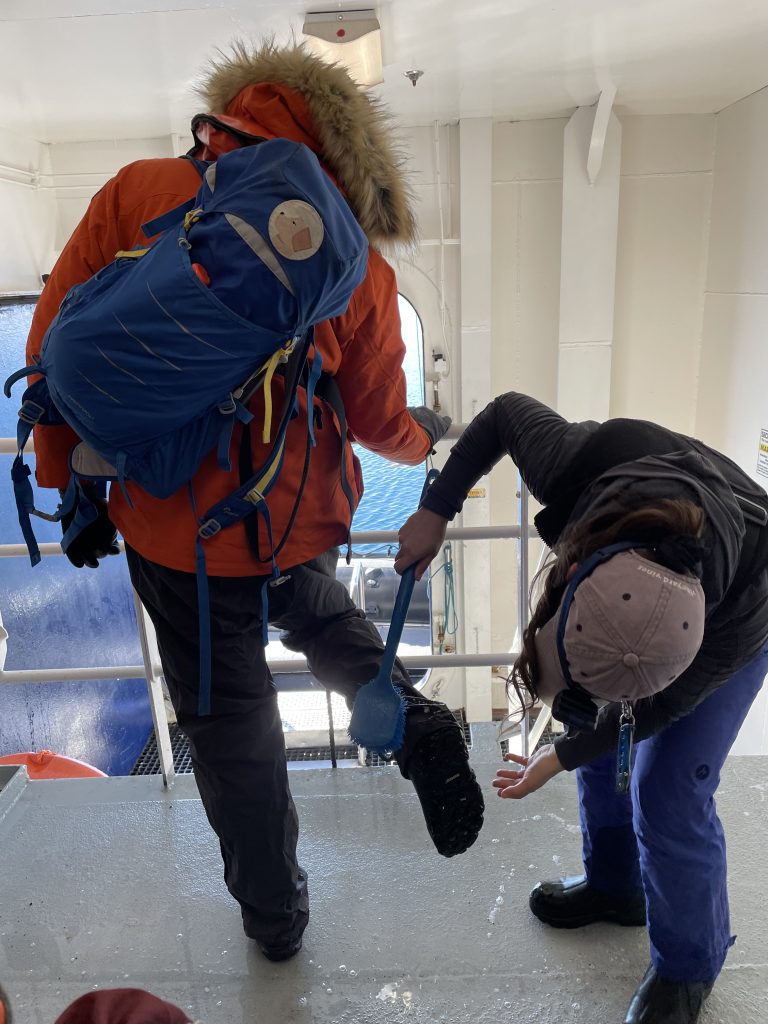
As we approach land, we get better views of the landscape and wildlife to come. We spotted a pod of fin whales and followed them for a bit, and saw small groups of penguins “porpoising.” This is pretty difficult to get good photos of, since they can change direction under water and then pop up in an unexpected direction. The wildlife experts on board gave me a few tips, and I hope with practice I’ll get better.
The South Shetlands are named for their counterpart islands in Scotland, but are even more desolate and snow-covered. Our first landing is on Half Moon Island, which has two small peaks connected by a low spit. The crew removes the zodiacs from their storage on the top deck, lowers them to the water with a crane, and sets off to set up the landing site.
We depart in two groups, and one who will just see the beach and one for those who wish to do a longer walk. Ruth and I opt for the longer walk, and are glad we did. We climb maybe two hundred feet above the water, and it’s nice to stretch our legs. It’s not too chilly but it is quite windy, and the sun has made the snow soft. The boots are rugged and have good traction, but it’s still a bit of slog when you’re post-holing up a hill carrying two cameras.
It’s a long way down, and some decide that instead of down climbing a steep section it would be better to slide on our butts. I sort of wish I had skis, but I didn’t have any extra space in my luggage. And now we can say we went sledding in Antarctica!
Back on the beach, we get our first up close views of penguins. These are chinstraps and gentoos, and much like the snow monkeys in Japan, everyone is very excited about the first one we see and takes a ton of photos.
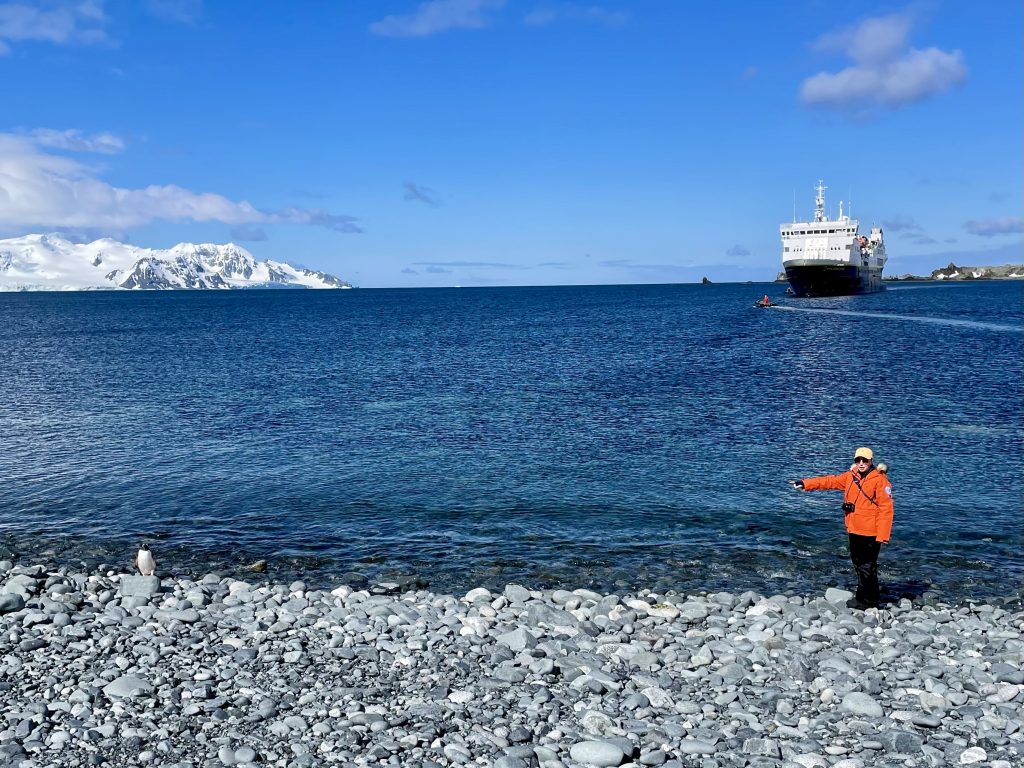
After returning to the ship, we have an evening reception in the lounge and are introduced to Captain Yuri Tupikov and the crew. They all seem very competent, and are as excited to show us Antarctica safely.
We have dinner, a few glasses of wine, then I head back to the cabin to back up photos do a bit of quick editing. I want to see the sunrise over some icebergs, which necessitates a 2am wake up. Glad I have so much practice with early starts from my previous photo expeditions.
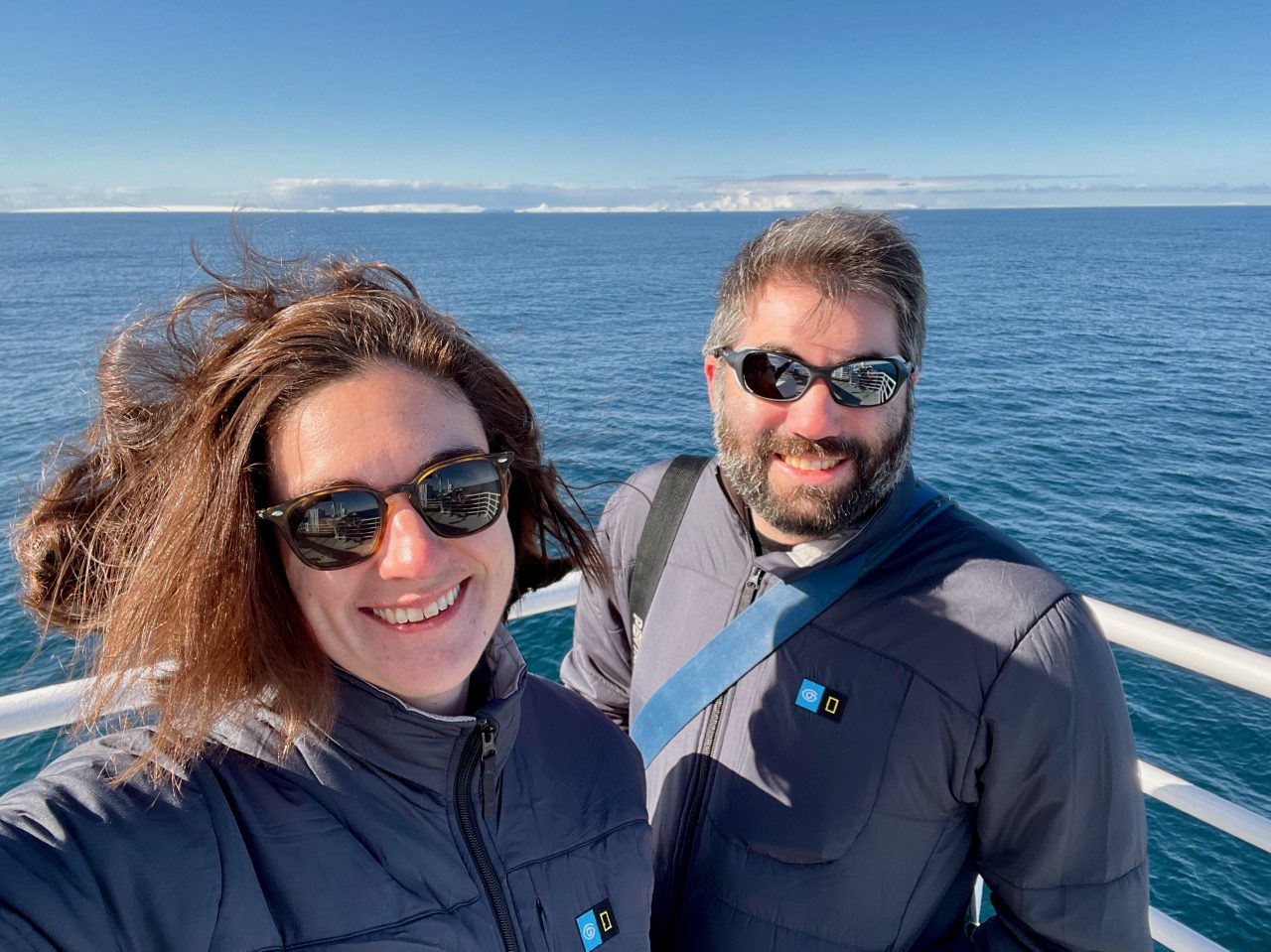
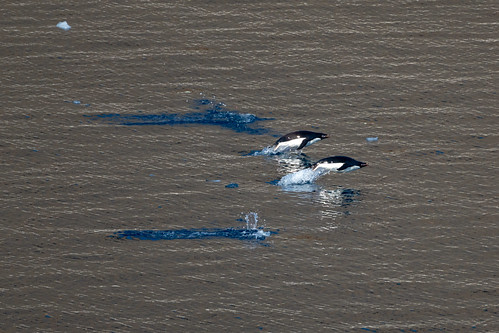
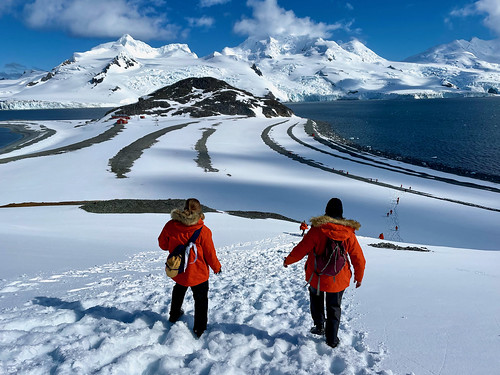
Leave a Reply